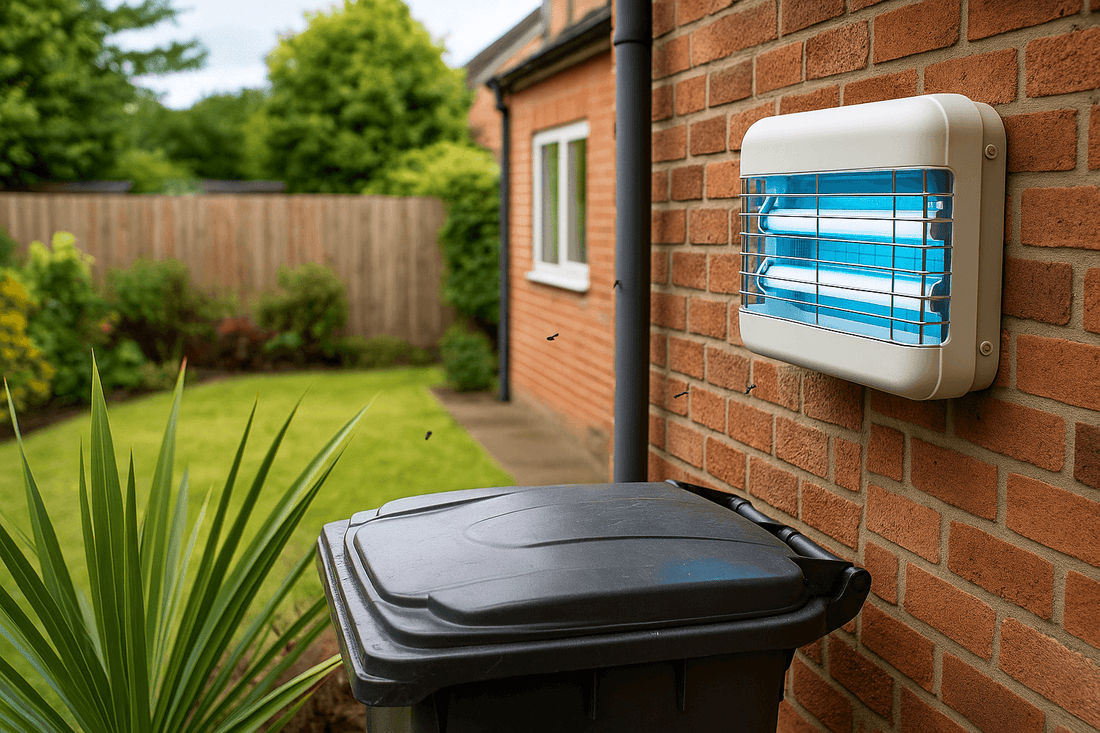Knowing how to position your fly trap is just as crucial as owning one. If you’re serious about fly control, the right placement can mean the difference between a buzzing problem and a bug-free environment. Whether you're dealing with fruit flies, house flies, or other flying pests, these expert-backed tips will help you make the most of your fly trap investment.
1. Eliminate Light Competition for Better Fly Attraction
To maximize the effectiveness of your electric fly trap, avoid placing it near other light sources such as windows or bright overhead lights. Competing lights can distract flying insects and reduce their attraction to your trap. For best results, install your fly catcher in a shaded, isolated spot where its light becomes the primary lure.
2. Keep Fly Traps Away From Food – But Not Too Far
If you're using a fly trap in the kitchen, avoid positioning it directly above food-prep areas or open dishes. Instead, place the flying insect trap near the food zone, but at a slight distance to pull flies away without risk of contamination. This is especially helpful in restaurants, bakeries, and cafes where fly control must be both safe and sanitary.
3. Know Where Flies Gather—Then Strike
Before setting up your fly trap, take a moment to observe. Do flies linger near a trash bin, sink, or fruit bowl? Place your fly killer device directly in or next to that hot spot. Strategic positioning is essential in effective fly pest control, whether indoors or outdoors.
4. Block Their Path—Intercept Incoming Flies
One of the smartest fly control strategies is to intercept flies before they enter the protected area. Install flying insect traps between entry points (like doors and windows) and your indoor space. In commercial kitchens, the rear door is often the main fly entrance—especially near dumpsters or grease bins—so be proactive and mount your trap accordingly.
5. Prioritize Safety and Easy Maintenance
Choose locations that are easy to reach when it’s time to clean the catch tray or change the UV lamp. Never place your fly trap above machinery or hard-to-reach corners. Making it accessible ensures you’ll service it regularly, keeping your fly control device performing at its best.

6. Choose the Right Height Based on Your Space
In residential homes, mount your fly trap at eye level for easier monitoring and access. For larger commercial or industrial buildings, install the trap at least 2.5 meters above the ground, away from moving equipment or vehicles like forklifts. Always place the trap in a location where air circulation is not obstructed, as poor airflow can hinder fly attraction.
Every Space Is Unique—Apply These Rules Flexibly
You may not be able to follow all six rules in every situation. That’s okay. The key to successful fly control is understanding the behavior of flying pests in your environment and making the smartest placement choice possible. If you’re ever unsure, don’t hesitate to consult a fly control expert or the product manufacturer for guidance.
People Also Ask:
What is the best place for a fly trap?
Near fly entry points like doors and windows, or areas where flies gather—such as trash bins or sinks.
Where should I place a fly trap indoors?
Place it near fly hotspots but away from food and strong light sources. Avoid direct placement over food-prep surfaces.
Where should fly lights be placed?
Mount fly lights 4–6 feet high on a wall, away from windows and not above food or workstations.
Where should fly traps be placed outdoors?
Place them 10–15 feet away from doorways or patios, near trash cans, compost areas, or other fly-prone spots.
What is the best location to place a fly trap indoors?
The best location is near where flies gather—like trash bins, sinks, or fruit bowls—while avoiding areas with competing light sources.
Should I place a fly trap near a window?
No, placing it near a window may reduce effectiveness because natural light can compete with the trap’s UV or light attraction.
